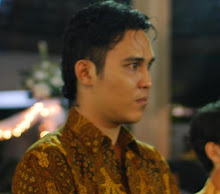Galeria crossroad is presumably one of the hearts of Yogyakarta city. This crossroad connects the busiest areas in this gudeg city, namely Jalan Jendral Sudirman with the old Bethesda on it, the busy Jalan Sagan, Jalan Solo as the shopping centre and Lempuyangan area that is famous for its Lempuyangan railway station, the oldest station in Yogyakarta. The crossroad now becomes one of the most crowded areas with the busiest traffic.
If you only look or pass by the crossroad, it will be meaningless. However, when you know the history further, you will find it more meaningful. To the north east of the crossroad, there used to be a gambling centre. The place was always busy every night; it seemed like the Las Vegas in the small Yogyakarta city. As the story tells, whosoever got into the gambling centre would certainly be addicted and would be trapped into the gambling network in it.
In the past, in the west part of the gambling centre, there was a small warong. The small food stall witnessed the losers who lamented over their fate after loosing their belongings in the gamble. Those who got their fortune in the gamble rarely dropped by in this warong since they would spend their money for luxurious things. It was in that small warong that the losers would stare at the luxurious thing, Galeria Mall.
Now, the gambling centre has disappeared. Nonetheless, the trace of its existence is represented by the mural inspired by Farhanski and Apotik Komik with the theme of "Buying Dreams". The mural is painted on the west wall of the gambling centre. The idea of the mural originated from Farhanski's experience when he saw the losers lamented over their fate in the warong. The mural seems like teasing the gamblers who depend their entire life on fortune.
The description of the murals intending to satire the gamblers who used to gamble in the east area of the wall is clear. The big writing, for example, says "Urip Waton Ngglindhing", meaning life just goes on. The text satires the life of gamblers that seems lying on the dice, or just rotates like wheels, without planning or efforts to achieve better life. When they win, they become rich at once; when they lose, they become poor at once, too.
Another text still satires the gamblers, saying "Ngglindhinge wong ndhuwur iso mabur, ngglindhinge wong ngisor mundhak ndlosor", which means the winning of the rich will make them fly even higher but the lose of the poor will make them even worse. Another text reminds people of the livelihood, "Rejeki iku Gusti allah sing ngatur, ora usah ngoyo lan nggresulo", which means God has determined how much we get; we do not have to exert and to complaint.
The pictures in the murals highlight the messages of the text. There are pictures of 'king' and 'queen', the characters in the cards used in gambling. Pictures of luxurious goods such as diamond are also depicted in the murals. There are also pictures of wheels and feet that might symbolize the message of the text that the life of a gambler is like the wheel that must always rotate without anyone can predict what is going to happen.
Initially, the murals teasing the gamblers cover the entire wall, but now only some parts of them can bee seen. The other parts, especially the bottom part, are decorated with other murals by different muralists. The latter might be considered to damage the previous pictures, but actually they response to the previous ones by depicting other activities done at this crossroad. Again, murals can tell daily activities of Galeria crossroad.
The daily activities include posters sticking on the wall. Galeria crossroad with its crowdedness is certainly a strategic place to promote different products. Unfortunately, the posters seem do not care of the murals existence on the wall that are intended to take care of the neglected wall. As a result, some people paint the posters covering the murals as form of protest.
The protest against posters sticking is clear. The murals in the form of texts are made directly on the posters. When YogYES took a close look, the surface of the murals were not smooth; that indicated the posters underlying the murals. With such a protest, the sticking of the posters is still done until now.
So special the murals in this area that people in the location that make their living as vendors were involved in the making process. hus, the murals are not exclusive work of the artists but they were made by local community because what were described in the murals were discussed and made together with the people. During the completion of the works, they even had to change the themes three times.

No comments:
Post a Comment